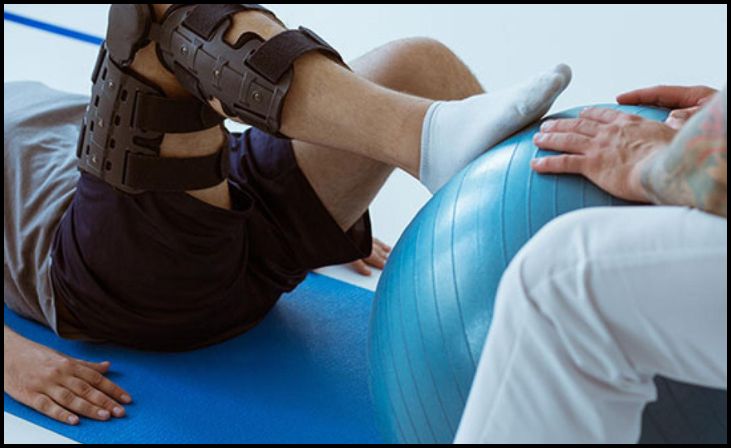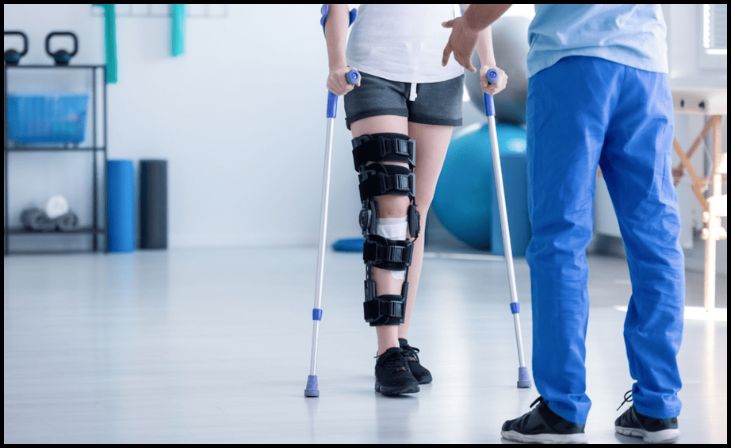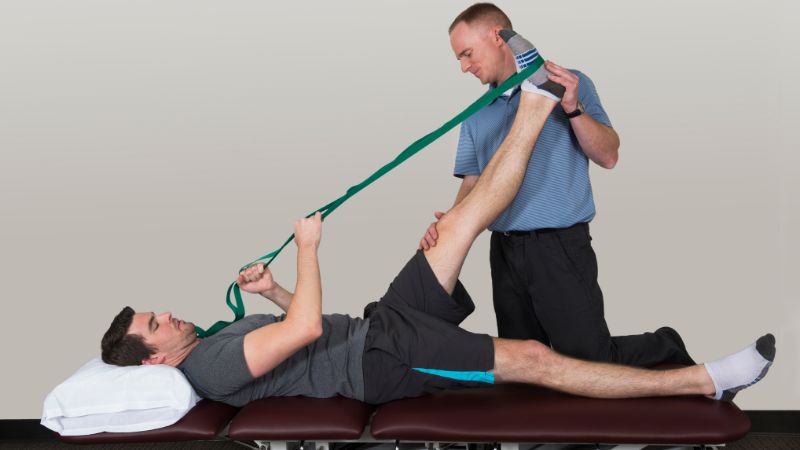Discover the transformative benefits of physical therapy for knee injuries with our comprehensive guide. Whether you’re recovering from a sports-related mishap or dealing with chronic pain, understanding how physical therapy can improve your knee health is crucial. This blog explores eight key advantages that physical therapy offers, from reducing pain to enhancing mobility and preventing future injuries.
Learn about tailored exercises, therapeutic techniques, and expert guidance that can make a significant difference in your recovery journey. Our mission is to arm you with knowledge so that you may decide on your health with confidence. Dive into the world of physical therapy and discover how it can restore functionality, improve strength, and bring you closer to a pain-free life.
Benefits of Physical Therapy For Knee Injuries
1. Pain Reduction and Management

Physical therapy plays a crucial role in reducing pain associated with knee injuries through various techniques tailored to each individual’s condition. Therapists employ modalities such as ice or heat therapy, ultrasound, and electrical stimulation to alleviate pain and inflammation. Additionally, specific exercises and manual therapy techniques like joint mobilization and soft tissue massage help improve circulation, relax muscles, and reduce discomfort. By addressing pain early on and continuously monitoring progress, physical therapists aim to enhance comfort levels and facilitate quicker recovery.
Also Read: 10 Physical Therapy Techniques For Post-Surgery Recovery
2. Improved Mobility and Range of Motion
One of the primary goals of physical therapy for knee injuries is to restore and improve mobility. Therapists design personalized exercise programs focusing on strengthening muscles around the knee joint and enhancing flexibility. Range of motion exercises, such as stretching and controlled movements, help loosen tight muscles and increase the joint’s flexibility. Gradual progression in exercises helps patients regain functional mobility, enabling them to perform daily activities with greater ease and minimal discomfort.
3. Strengthening of Muscles and Stability
Weak muscles surrounding the knee joint are frequently a factor in instability and injury risk. Physical therapists prescribe strengthening exercises targeting specific muscle groups, including quadriceps, hamstrings, and calf muscles. These exercises not only rebuild muscle strength but also improve overall joint stability. Through resistance training and functional exercises, patients can regain muscle control and support for the knee, reducing the risk of future injuries and enhancing overall physical performance.
4. Accelerated Recovery Post-Surgery

For individuals recovering from knee surgery, such as ACL reconstruction or meniscus repair, physical therapy is integral to the rehabilitation process. Therapists work closely with surgeons to create a comprehensive recovery plan that begins soon after surgery. Early rehabilitation focuses on reducing swelling, restoring range of motion, and preventing muscle atrophy. As healing progresses, therapists implement strengthening exercises and functional training to help patients regain full strength and mobility, ensuring a smoother and faster recovery.
5. Prevention of Future Injuries
Beyond recovery, physical therapy aims to prevent recurrence of knee injuries. Therapists educate patients on proper biomechanics and movement patterns to reduce strain on the knee joint during daily activities and sports. Customized exercise programs not only strengthen muscles but also improve balance and coordination, crucial factors in injury prevention. By addressing underlying weaknesses and promoting proper body mechanics, physical therapy empowers individuals to maintain long-term joint health and minimize the risk of reinjury.
6. Non-Invasive Treatment Option
Physical therapy offers a non-invasive alternative to managing knee injuries, particularly beneficial for individuals preferring conservative treatment approaches over surgery or medications. By focusing on natural healing mechanisms and functional improvement, therapy sessions aim to restore optimal knee function without invasive interventions. This approach not only reduces recovery time but also minimizes potential risks and complications associated with surgical procedures, making it a preferred choice for many patients.
7. Individualized Treatment Plans
Each patient’s journey through physical therapy is unique, tailored to their specific injury, medical history, and personal goals. Physical therapists conduct thorough assessments to determine the underlying causes of knee pain or dysfunction. Based on these findings, they develop personalized treatment plans encompassing a combination of therapeutic exercises, manual techniques, and patient education. Regular evaluations and adjustments ensure that the therapy remains effective and aligned with the patient’s progress and recovery milestones.
8. Improved Quality of Life

Ultimately, physical therapy for knee injuries aims to enhance overall quality of life by restoring function, reducing pain, and improving mobility. Beyond physical benefits, therapy sessions also address psychological aspects, offering support and motivation throughout the rehabilitation process. By regaining independence in daily activities and achieving optimal physical performance, patients experience a significant improvement in their well-being and overall satisfaction with life.
In conclusion, physical therapy stands as a comprehensive and effective approach to managing knee injuries, offering a range of benefits from pain relief and improved mobility to accelerated recovery and injury prevention. By partnering with a skilled physical therapist and committing to a personalized treatment plan, individuals can reclaim their knee health and enjoy an active, pain-free lifestyle.
Also Read: 10 Best Physical therapy stretches for increase flexibility
Conclusion
In conclusion, physical therapy stands as a beacon of hope for anyone facing knee injuries. Through targeted exercises and specialized care, it not only alleviates pain and improves mobility but also prevents future issues. Whether you’re an athlete or someone recovering from surgery, the benefits are clear: enhanced strength, flexibility, and a better quality of life. Embrace the power of physical therapy to regain control over your knee health and pave the way for long-term well-being. Take the first step towards recovery today and experience firsthand the life-changing advantages it offers.
FAQs
What types of knee injuries can benefit from physical therapy?
Physical therapy is beneficial for various knee injuries, including ligament tears (ACL, MCL), meniscus tears, patellar tendinitis, bursitis, and arthritis. Therapists customize treatment plans to address specific issues and promote healing.
How soon after a knee injury should I start physical therapy?
The timing of starting physical therapy depends on the severity of the injury and your doctor’s recommendation. In many cases, early initiation, even within days after injury or surgery, can help accelerate recovery and prevent complications like stiffness and muscle weakness.





